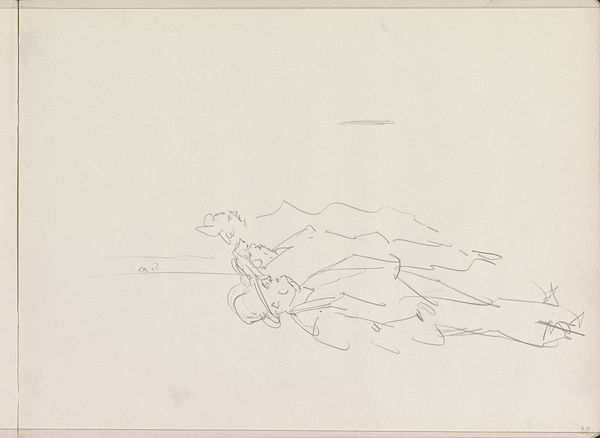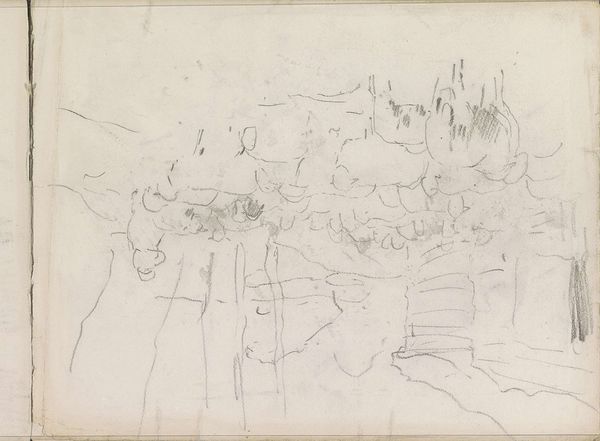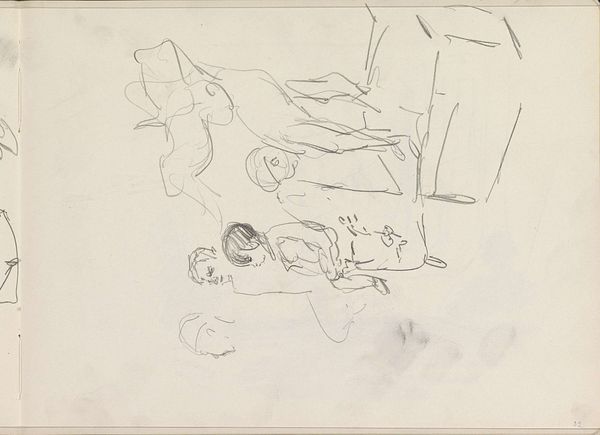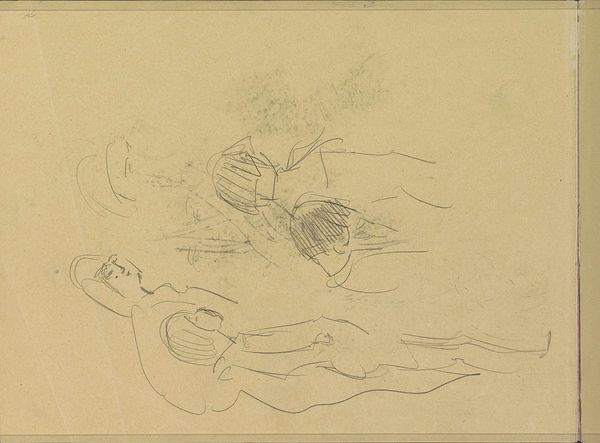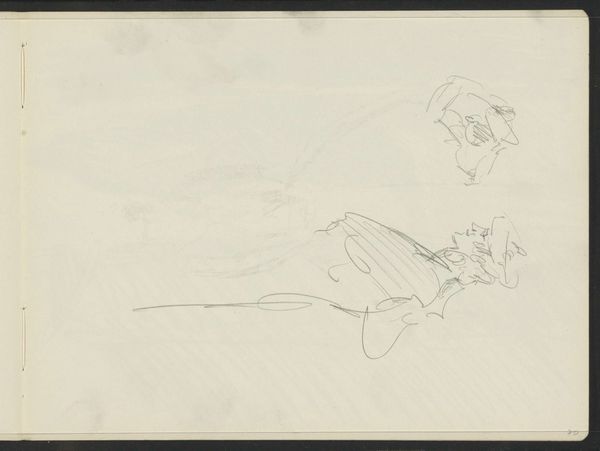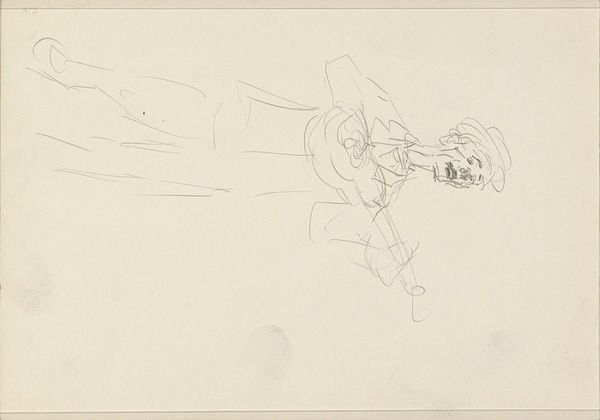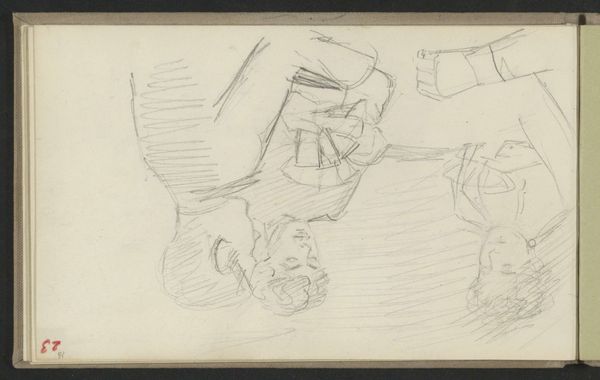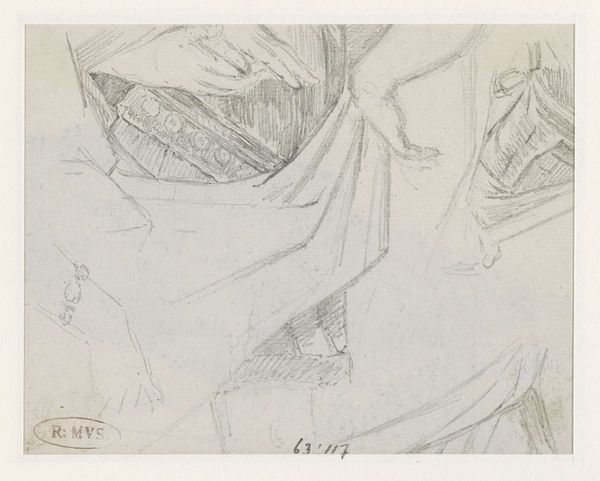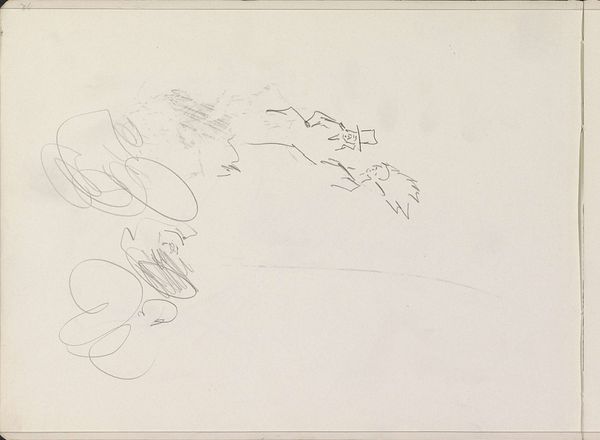
drawing, chalk, graphite
#
portrait
#
drawing
#
baroque
#
figuration
#
chalk
#
graphite
#
rococo
Copyright: Public Domain
Curator: Allow me to introduce you to "Studienblatt drei Figuren und ein Arm," or "Study Sheet of Three Figures and an Arm," created circa 1740-1745 by Giovanni Battista Tiepolo. It’s a drawing rendered with chalk and graphite. What’s your initial take? Editor: The figures seem disconnected, almost floating. It evokes a sense of societal detachment, perhaps even indifference. Is it meant to portray subjects absorbed in their own isolated spheres, disconnected from any unified social cause? Curator: It could be that Tiepolo simply wanted to represent dynamic relations through balanced composition. The arrangement creates a complex rhythm for the viewer's eye as it travels across the paper. Notice how the angles and implied lines interact, despite the unfinished quality. Editor: That's certainly one reading, but how can we divorce the image from its potential societal commentary? The piece's seemingly incomplete and fragmented structure can easily serve as a metaphor for incomplete justice, in light of aristocratic social injustices pervasive in Europe. Curator: We must remain cautious not to assign contemporary concerns retroactively. Surely we can analyze the work using contemporary philosophical frameworks, or we could dive deeper into how the very visible graphic vocabulary speaks about 18th-century mark-making. Editor: True, yet consider that every artist inevitably embeds their societal awareness within their creations, consciously or otherwise. Looking into Tiepolo's broader life and work may offer hints of those tensions, helping reveal any existing parallels that relate back to inequality or power dynamics. Curator: An intriguing hypothesis indeed, but focusing solely on such extrinsic associations overlooks Tiepolo's meticulous technique. The economy of line, the contrast between light and shadow – these elements themselves convey volumes and establish visual hierarchies within the image. Editor: I appreciate the reminder about structural analysis and formal elements, it makes me wonder though what his place as a cis, white male contributed to his portrayal of figures that often have religious contexts and overtones that privilege masculinity. It's impossible to divorce it. Curator: Perhaps, or we can remain attentive to formal qualities and understand artmaking through the unique properties that comprise each individual work of art. Editor: Yes, but by integrating broader societal and theoretical awareness, a drawing like Tiepolo's can generate critical discussion about historical representation, thus adding to its meaning and overall contemporary relevance.
Comments
No comments
Be the first to comment and join the conversation on the ultimate creative platform.


